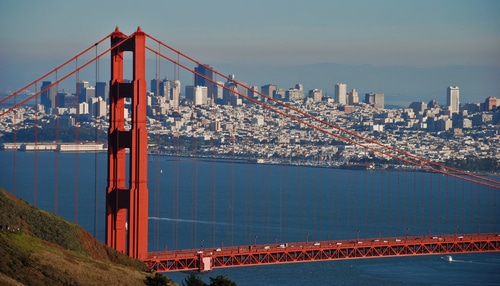There are five types of bridges, and these are, Girder, arch, cable, rigid framed and truss. Each has its unique features and uses.
The Girder Bridge
This is a bridge in its simplest and most common form. A log across a stream is an example of this structure. The most common forms of the girder bridge are the box-girder and the I-beam, which are used in steel bridges.
If you look at a cross-section of the I-beam, the vertical plate in the centre is called the web, and the lower plates are referred to as flanges.
The box-girder is in the form of a box with two flanges and two webs.
The Arch Bridge
This is a classical structure and next oldest after the girder bridge. This type of bridge suits stone and is perfect for skirting valleys and rivers. Not only are these bridges beautiful to look at but the laws of physics make them extremely stable and robust. Any load that it takes will produce horizontal forces caused by the arch. There are four types of arches:
- Hinge-less
- Two-hinged
- Three-hinged
- Tied arches
Cable-stayed bridges
Typically this is a continuous girder that has one or more towers in the middle of the span. Cables come down from the towers to give support to the girders. This sort of structure is not only durable but also very flexible. This bridge can span significant distances, but their very elasticity can make them susceptible to the wind.
The exclusive properties that are found in cables make the design calculations complicated, and longer spans mean that calculations need to be done on computers
Rigid frame bridges
Sometimes known as Rahmen bridges, a rigid frame has the piers and the girder in a stable structure. A cross section of this type of bridge is usually a box or I-shaped. The design of a rigid frame bridge is harder to work out than a girder bridge. Fabrication of the girder and the junction of the pier is not an easy job.
Even though it is possible to select a wide variety of styles and shapes, most modern bridges are a pi-shaped frame, V-shaped or batter –post.
- Batter post is suitable for valley and river crossings
- V-shapes will make good use of foundations
- Pi-shaped are often used on urban motorways
Truss bridges
All beams in a truss bridge are straight. The trusses are made up of lots of small beams that when put together can take an enormous amount of weight, and span large areas. The fabrication and design of this type of structure are relatively simple but can take up a lot of space.
Because of the small size of all of the individual parts, this bridge type is ideal when construction is difficult due to space constrictions.

